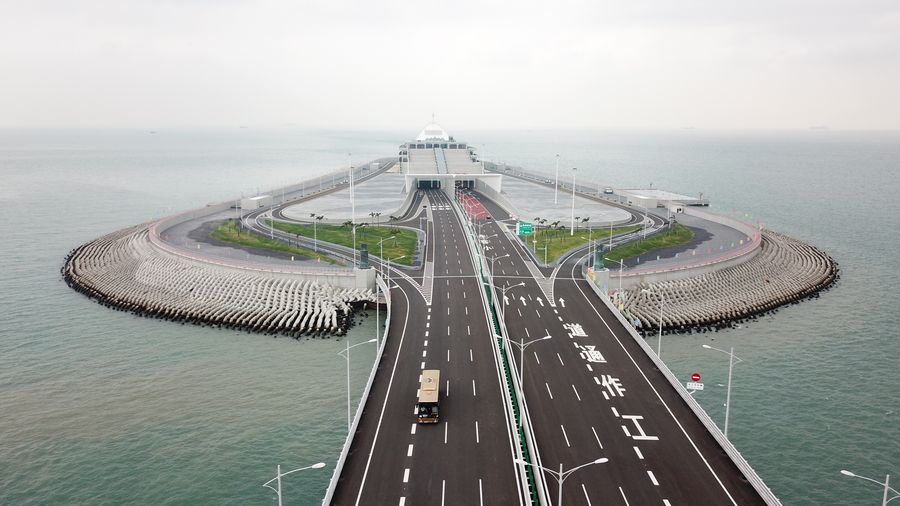
Aerial photo taken on Oct. 24, 2018 shows a vehicle running on the Hong Kong-Zhuhai-Macao Bridge. (Xinhua)
"The number of urban residents in China has been rapidly increasing. From 1978 to 2019, the number of urban residents rose to 850 million from 170 million," Zheng Xinli said.
SAN FRANCISCO, Jan. 19 (Xinhua) -- China's green and sustainable urbanization will set an example for developing countries and ultimately drive global economic and social development, a Chinese expert has said in Silicon Valley.
Zheng Xinli, vice chairman of the China Center for International Economic Exchanges who is currently visiting the Bay Area, made the remarks at an international forum on sustainable development of towns in Palo Alto, California.
"The number of urban residents in China has been rapidly increasing. From 1978 to 2019, the number of urban residents rose to 850 million from 170 million, which means the number increased 680 million in nearly 41 years," Zheng told the forum organized by the Center for Sustainable Development and Global Competitiveness at Stanford University.
It's estimated that the number of permanent residents in Chinese cities will reach 1.02 billion by 2030, and the urbanization rate of permanent population and registered population will be 70 percent by 2030, according to Zheng.
Compared with developed countries' average urbanization rate of 80 percent, China still has a 20-percent margin for growth, and urbanization remains a key driving force for China's economic development in the next decade, he said.
China's three world-class city agglomerations -- the Beijing-Tianjin-Hebei region, the Yangtze River Delta and Guangdong-Hong Kong-Macao Greater Bay Area -- have become the engines of China's economic growth, he said, adding they are poised to become the world's three major growth poles, said Zheng.
By 2020, the GDP of each of the three Chinese urban agglomerations will be over 2 trillion U.S. dollars, exceeding that of the New York Bay Area and the Tokyo Bay Area -- the world's two leading urban agglomerations, he noted.
China's urbanization will bring huge demand and market opportunities for the world, especially in energy and environmental protection, healthcare and education, he said.
"The newly added registered urban dwellers in China generate a new consumption demand of 30 billion dollars a year, driving 7.5 trillion dollars in public investment," said Zheng.
He also noted that China's sustainable urbanization can set an example for developing countries.
"Sixty-one percent of the global population will live in Asia and 17 percent in Africa. When combined, the two continents have close to 80 percent of the global population," said Zheng.
With a growing population and economic strength, Asia and Africa, both the fastest growing regions in the world, will play an increasingly important role in global economic and social development, he said.
However, the Chinese official also noted imminent environmental and social challenges that are restricting their development.
"Once Asia and Africa choose this pathway (sustainable urbanization), they can bring tremendous impetus to the world's social, environmental and economic development, helping realize the UN's 2030 Agenda for Sustainable Development," said Zheng. ■



